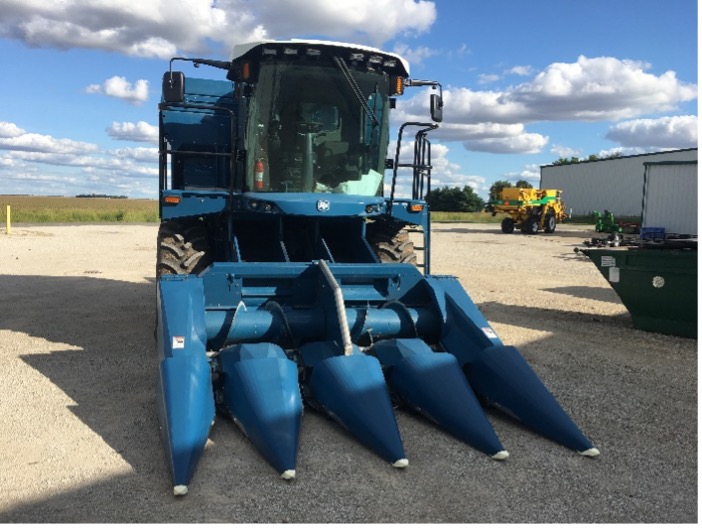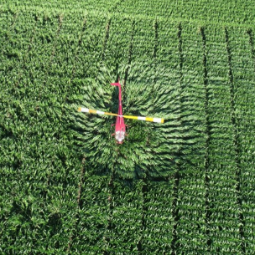As we are progressing through another growing season, it will all culminate with the reaping of our crops. The start of the year had many growers testing their patience with some areas experiencing ideal conditions while others had a hard time getting much done between rain events. All in all, the state appears to be in good shape going into fall. Our breeding trials are also in good shape for the most part. Most of that is attributed to ideal growing conditions and weather this summer and no catastrophic pests or incidents. By several accounts, this appears to be a sizable crop in Illinois and thus farmers will be very busy harvesting and attempting to store a big crop.
The harvest season is also the busiest time for our breeding organization. We too harvest what we sow. Unlike famers, we do not have to store and or manage the grain harvested, but our breeding group manages the data we collect. There are many different traits that we collect for each crop that helps characterize the hybrid or variety. There are also various ways in which we collect the data. As technology advances and gets adopted, a growing portion of the data is coming from machines and sensors; however, we also have breeders, scientists, and researchers walking the fields to capture observations. All the observations taken in the field by researchers are done electronically. Depending on the note, it can be a rating, an actual measurement, or simply comments on what is observed and captured as free text. A successful season in breeding is the ability bring multiple forms of data together to make meaningful decisions and thus produce hybrids or varieties that producers can depend on.
Data across our breeding group is collected in multiple ways. Our yield data is generated by our field teams that operate combines that are designed and engineered to harvest smaller plots. While the combine itself has not changed all that much over the years, the software and data collection devices have been continuously upgraded as technology has allowed. Almost all the corn and soybean combines will harvest two plots at a time. However, the newer style weigh system only captures weights and moisture on one plot at a time, thus reducing error that could come from two different weigh systems. In a previous blog post, I had touched on the increased use of unmanned aerial vehicles (UAVs) in our operations to collect data, which is the case for some traits. A couple major traits we can now capture with a UAV are corn plant heights and soybean maturity. Both traits are very labor intensive if done by a human. The UAVs allow us to capture more data and in a much more uniform way.
We still heavily rely on humans to walk plots and fields to assess products in different environments. It is critical to have people in the field that understand the potential of products as well as any major concerns that is not reflected in the data. Our breeding locations are placed to capture major growing areas and be a representative location for the surrounding area. As issues arise, whether it be a wind event or a disease, we can then send people to collect opportunistic notes to further evaluate products. These are not guaranteed to happen every year but are critical to understanding strengths and weaknesses.
Since we know we cannot count on opportunistic data every year, we do conduct experiments with disease where we inoculate. For soybeans, we inoculate with several of the broader acre diseases, such as white mold, sudden death syndrome and IDC (Iron Deficiency Chlorosis). One of our major wins in the corn crop is being able to inoculate for tar spot. An in-field inoculation method for this disease allows us to screen a lot of germplasm much quicker and in a controlled way compared to an opportunistic event. This can be said for several diseases of concern for corn, but tar spot is one we are heavily focused on. Another controlled event we purposely submit our products to is artificial greensnap events. We use a helicopter flying just above the canopy to simulate a heavy wind event. This artificial test allows us to place the products we need evaluated in this experiment. There are other similar tests we perform on our products within breeding, but those are a couple of examples.
Since producers get paid primarily on volume (bushels), it is no secret that the main driver for a product to advance through the breeding pipeline is its performance or yield. It must be able to be as good as or hopefully better than other current offering products to advance. If it does not have a yield advantage, it must carry some other advantage to the producer. Those types of traits are often referred to as secondary traits. For a soybean variety, it could have an improved disease profile, better standability, or hopefully, both. Regardless, it needs to be an improvement from what is currently being offered. Being able to test those differences out across many different environments is not possible without a robust data set.
Other data that is captured but may not be used for advancing a product further in our pipeline, but yet is still critical to have, are the phenotypic characteristics. For example, in soybeans we need to know each variety’s colors. Some of the colors we collect are flower, pod, pubescence, and hilum. These are characteristics, as well as many others, allow us to identify varieties in the field as well as help develop plant variety protection patents. The breeding group will also screen our products for herbicide sensitivity as well as trait performance to ensure traits will work effectively on a broad range of germplasm.
Breeding is currently preparing our systems to ensure the harvest data comes in and can be processed as expected. There are teams that build and design the software needed to curate the data and make it presentable to the breeding scientists and the commercial teams. The scientists and product managers are planning on what fields to visit, while our field teams are getting the combines ready. The next major step in the breeding season is to advance and deploy our winners onto the next stage of testing or to a spot in our commercial lineup.






 and then
and then